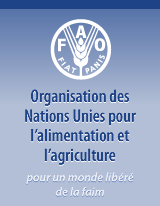 FAO and TRAFFIC join forces to put MAPS on the map!
FAO and TRAFFIC join forces to put MAPS on the map!
FAO and TRAFFIC are joining forces to assess available data for selected flagship medicinal and aromatic plants (MAPs) to improve the visibility of non-wood forest products in forest statistics, support more systematic monitoring of MAPS and inform associated policy and decision making, with the ultimate aim of assessing the sustainability of MAPs-based value chains for improved livelihoods and conservation of plant diversity.
Hundreds of millions of people depend on MAPs for a living, with hundreds of millions more consuming these products or ingredients on a daily basis (TRAFFIC, 2019). Over 30,000 plant species are known to have well-documented medicinal or aromatic uses, and over 1,000 of these in international trade, primarily as food and well-being product ingredients. The IUCN Medicinal Plant Specialist Group estimates that around 20% of plant species assessed against the Red List are threatened with extinction in the wild. The over-harvesting, driven by the commercial trade, as well as habitat change due to conversion and the impacts of climate change are main threats. The industries using wild plant ingredients are diversifying, with many of plants traditional used in medicine (e.g. in traditional Chinese medicine), becoming increasing popular food and wellness ingredients. Incomplete data on these products, as well as practical methods to assess the sustainability of MAPs harvest and trade, however, threaten both livelihoods as well as plant diversity and habitats in general.
Fore more information, please contact: [email protected] and [email protected].
